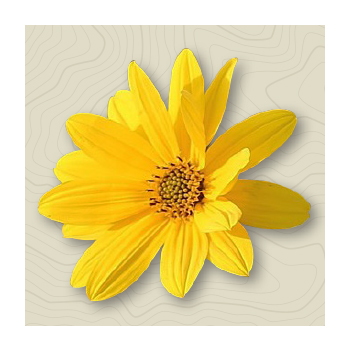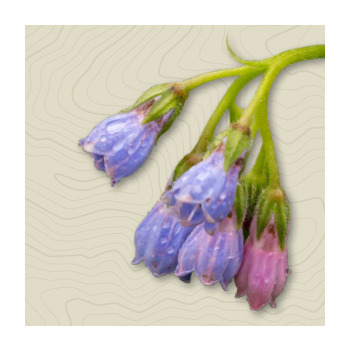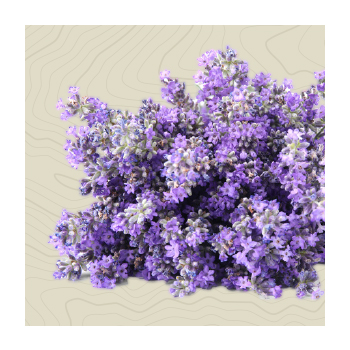


Sign-up for {N}power to get exclusive discounts, newsletters, members-only features, and more!

There’s a natural rhythm to the seasons we have come to love and appreciate, and one of the most beloved may be the transition from winter to spring, when we begin to defrost, waken from our hibernations, and get back outdoors. But, with our return to outdoor activities, there come some not-so-pleasant encounters and pitfalls. Take, for example, the inevitable wasp sting, the excruciating itch of poison ivy, a painful bruise or scraped knee. Before you jump feet first into the great outdoors this season, be prepared with your own natural first aid kit that promises to not only relieve symptoms fast, but without the unwanted side effects that can come with conventional treatments.
At the top of the list of items to always have in your natural first aid kit are homeopathic remedies, both topical and oral. Homeopathic formulas use the principle of treating ‘like with like,’ with the notion that the more an ingredient is diluted, the more potent it becomes, and that a small amount of the symptom-causing substance stimulates your body to heal itself and provide natural desensitization of the irritations.1 This can be especially effective when treating the itching, burning, redness, and pain associated with stings and bites, an unfortunate encounter with poison ivy, oak, or sumac, and other contact allergic-response reactions.2 3 Some must-have homeopathic remedies include apis for stings that cause rapid swelling and redness; ledum for stings and bites that are painful and throbbing, but with little swelling; grindelia, used topically for poison ivy/oak and stings accompanied by intense itching and burning;4 and Ssssting Stop®, a topical formula that is indicated for stings as well as poison ivy/oak.
 Another homeopathic remedy that’s essential to any first aid kit is arnica, which has been used for centuries to reduce the pain and inflammation associated with sprains, bruises, and wounds.5 Today, arnica is used as a popular homeopathic remedy both topical and orally for the treatment of bruises and sprains, as well as swelling, muscle aches, joint pain, burns, and inflammation from insect bites.6 7 8 In one trial, a homeopathic therapy containing arnica 200 CH (CH is a standard European measurement for homeopathic remedies; the equivalent in the U.S. is 200 CK), with and without a combination of two creams containing arnica, showed promising results from sports-related ankle sprains. Treatment with oral arnica, alone or in combination with arnica creams, for six and 12 days, reduced pain more efficiently compared to the control group.9
Another homeopathic remedy that’s essential to any first aid kit is arnica, which has been used for centuries to reduce the pain and inflammation associated with sprains, bruises, and wounds.5 Today, arnica is used as a popular homeopathic remedy both topical and orally for the treatment of bruises and sprains, as well as swelling, muscle aches, joint pain, burns, and inflammation from insect bites.6 7 8 In one trial, a homeopathic therapy containing arnica 200 CH (CH is a standard European measurement for homeopathic remedies; the equivalent in the U.S. is 200 CK), with and without a combination of two creams containing arnica, showed promising results from sports-related ankle sprains. Treatment with oral arnica, alone or in combination with arnica creams, for six and 12 days, reduced pain more efficiently compared to the control group.9
And while it’s not a homeopathic remedy, Bach’s Rescue Remedy® is a blend of flower essences that is wonderful for calming someone who has just been injured. You can find it in dropper form, a spray, or pastilles. There is even one specifically for pets!
 Comfrey is an herb from the borage or forget-me-not plant family, and has been used medicinally for at least 2,000 years for various conditions, including bone fractures.10 Comfrey's original name, “knitbone,” derives from the external use of compresses of its leaves and roots to speed up healing broken bones by stimulating new cell growth. Because it has such a strong ability to stimulate new cell growth, it should not be used on deep or open wounds because it could heal the top layer of skin before the bottom layer is healed, but it is an excellent topical remedy for sprains, pulled muscles, swelling, bruises, and minor cuts and scratches.11 12 13
Comfrey is an herb from the borage or forget-me-not plant family, and has been used medicinally for at least 2,000 years for various conditions, including bone fractures.10 Comfrey's original name, “knitbone,” derives from the external use of compresses of its leaves and roots to speed up healing broken bones by stimulating new cell growth. Because it has such a strong ability to stimulate new cell growth, it should not be used on deep or open wounds because it could heal the top layer of skin before the bottom layer is healed, but it is an excellent topical remedy for sprains, pulled muscles, swelling, bruises, and minor cuts and scratches.11 12 13
When it comes to back pain, comfrey also has your back. In a study of 379 patients with acute upper or low-back pain, those using a cream containing 35 percent comfrey root extract on the affected area three times a day for five days saw superiority in the reduction of pain as compared to the other treatment groups without comfrey root extract.14 In another study, participants with ankle sprains received either comfrey cream or diclofenac gel, a type of non-steroidal anti-inflammatory drug (NSAID). Results showed that ankle swelling decreased by 79 percent in the comfrey root group and only 69 percent in the diclofenac group, while pain was reduced by 80 percent in the comfrey root group, and 74 percent in the diclofenac group.15
Every first aid kit needs lavender essential oil. It’s one of the most versatile oils with benefits ranging from relaxation and sleep to relieving anxiety, depression, stress, headache, and tension. Topically, it is beneficial for itching, pain, burns and sunburn, and even wound healing.16 17 18 19 20 21
One study demonstrated lavender oil’s ability to promote wound healing by inducing expression of types I and III collagen, accompanied by an increased number of fibroblasts, which synthesize collagen. Data from this study showed that wounds topically treated with lavender oil “significantly decreased as compared to that of wounds of the non-lavender control subjects at 4, 6, 8, and 10 days after wounding.” The study concluded, “The beneficial effect of lavender oil on wound healing may raise the possibility of new approaches as complementary treatment besides conventional therapy.”22
 Lavender is also very effective as an antiseptic—an agent that slows or stops the growth of microorganisms on external body surfaces—and antimicrobial for burns, insect bites, cuts, rashes, and abrasions.23 24 It’s also commonly found in many natural bug-repellant formulas as an effective repellant against mosquitos and ticks, with one study showing it performed as well against ticks as the controversial DEET.25 Another reason to lean on the benefits of lavender is that it’s generally safe for use on adults and children as well as pets, and unlike many essential oils, it can be applied directly to the skin. It rarely causes allergic reactions and has very low toxicity.
Lavender is also very effective as an antiseptic—an agent that slows or stops the growth of microorganisms on external body surfaces—and antimicrobial for burns, insect bites, cuts, rashes, and abrasions.23 24 It’s also commonly found in many natural bug-repellant formulas as an effective repellant against mosquitos and ticks, with one study showing it performed as well against ticks as the controversial DEET.25 Another reason to lean on the benefits of lavender is that it’s generally safe for use on adults and children as well as pets, and unlike many essential oils, it can be applied directly to the skin. It rarely causes allergic reactions and has very low toxicity.
While talking about essential oils for your natural first aid kit, I’d be remiss to leave out tea tree oil. This useful oil is antibacterial as well as antifungal and can be used for a variety of irritations, including athlete’s foot, insect bites, and lice; it also acts as an insect repellent.
When building your natural first aid kit, there’s no question that these potent plant-powered remedies should be in the mix. They’re versatile, effective, and gentle alternatives as opposed to NSAIDs, antihistamines, or medicated creams that can come with unwanted side effects.



Sign-up for {N}power to get exclusive discounts, newsletters, members-only features, and more!